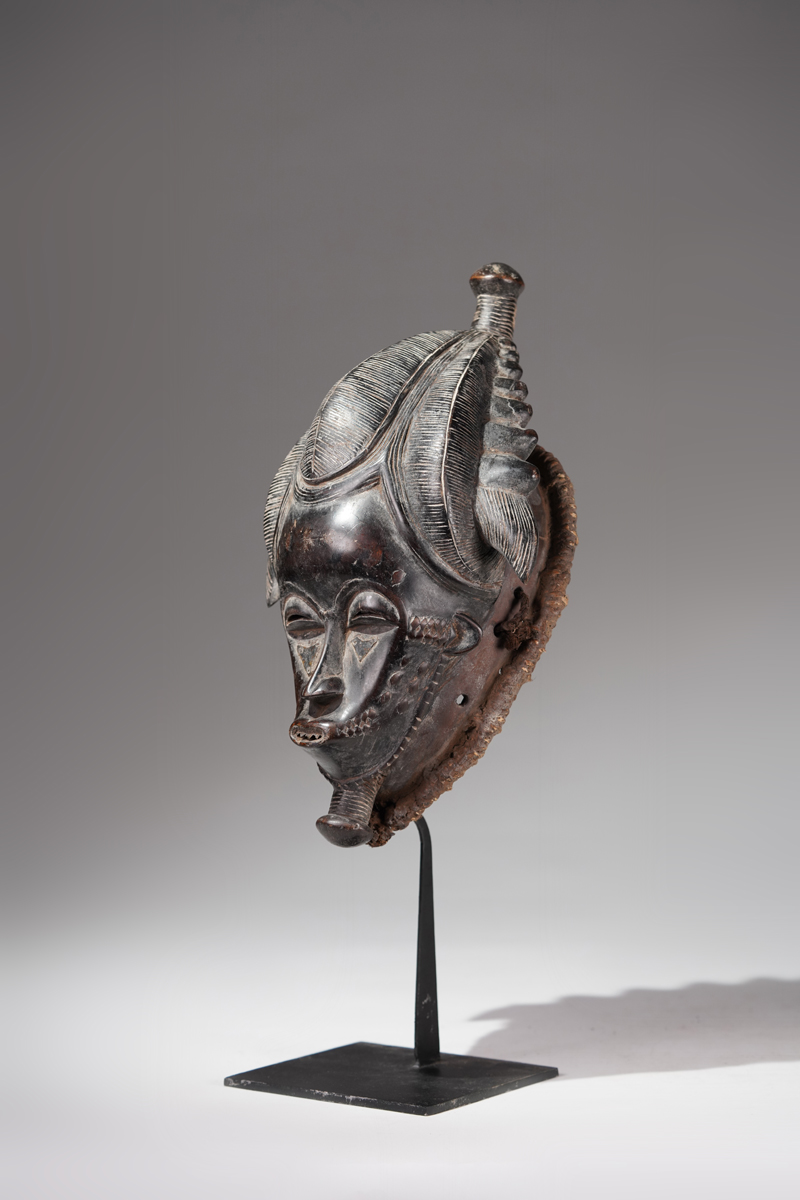|
A Baule mask, Bouake region, Ivory Coast, with delicate aesthetics and harmonious a-symmetry, this item evoke feelings of tranquility and balance, thus contributing to its overall value: slit eyes, opened mouth at the end of the jaw line, pointed nose, small ears, the hairdo is a conical shape, scarification and keloid marks on the cheeks, the rims of the mask are punctured with holes to attach a costume to it, in addition to having a rope stuck to it; signs of use. Certificate of origin and provenance. "The Baule are originally part of a breakaway group of the Akan people from Ghana. In the 17th century, Queen Abla Pokou led a group on an exodus away from the main Ashanti Confederacy after a war broke out due to disagreements among the factions. Pokou realized that she and her followers may be in harms way, so she took her people and headed westward. Legend says the group came upon the Comoé River, with its dangerous waters and needed a way to safely cross. With the enemy gaining on them, Queen Pokou asked a diviner for advice. The diviner, after much thought, told her the gods required a sacrifice. Everyone began throwing their most prized possessions into the river; gold, ivory, cattle, everything they owned, hoping to appease the gods. The diviner shook his head and said that our sons are our most prized possessions. Pokou, knowing that her duty as queen was more important than that of a mother, decided then to sacrifice her only son, throwing him into the water and calling out “Ba ouli”, translated to “the child is dead”, giving them the name Baule. After the sacrifice was made, hippopotamuses came up from the river and formed a bridge allowing the queen and her people to cross." "Differing from most cultures, the Baule are a matriarchal society. Not only are genetic lineages traced by the mother’s blood line, but they refrain from participating in secret societies and initiations that usually forbid women. They believe women’s rights are sacred and are for the most part, given the same opportunities as men. They do however, have some objects such as special men’s masks or anthropomorphic monkeys that women are forbidden to see due to fear of harm or death." |
 photo: wolfgang-jaenicke.com, for more information, please write us an e-mail with the identification number of the photo identification no. XBD122931.jpg |